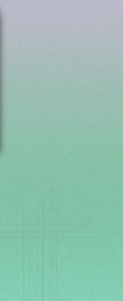





 |
 |
 |
 |
 |

iphone xs glitter case - lovecases - silver reviews
SKU: EN-A10182
![]()
iphone xs glitter case - lovecases - silver reviews
Europe has been good to Huawei, too. "We were able to grow our market share to 12 percent in Europe," Giles said, pointing to success in countries like Spain, Italy, Poland and Brussels. One country where Huawei doesn't have a strong presence, though, is India, where Xiaomi has thrived. Despite being a huge and growing market, Giles doesn't see India as its key to topple Apple or Samsung. "It's very difficult to be profitable in the Indian market," he said, citing heavy competition and cost-sensitive buyers -- most phones sold in India cost less than $150. "We have been very open in our aspirations to be a premium-focused player in the industry and to be more and more premium-focused."That brings us back to the US. In total, Huawei sold 34 million phones in the first quarter, a 21 percent increase from the year before. That's impressive, but Apple sold 15 million more iPhones, and Samsung's shipments were just under a gargantuan 80 million.
It's not a bad spot, but unless Huawei can become a thing in the US, third place is where it'll stay, Update, 3:10 p.m, PT: Added comment from Xiaomi, Batteries Not Included: The CNET team shares experiences that remind us why tech stuff is cool, CNET Magazine: Check out a sampling of the stories you'll find in CNET's newsstand edition, Huawei says a US launch is inevitable, and seems to be eyeing the advent of 5G as the time to do it, Most people in the US have never heard iphone xs glitter case - lovecases - silver reviews of Huawei, let alone know how to pronounce the name, The Chinese technology giant wants to change that..
It's not the first time we've seen Wi-Charge's tech in action -- we had a preview in 2015 -- but it feels a lot more refined after two years. The receivers look cleaner and the power delivery mechanism looks smaller. How it works is simple: The transmitter sends energy through an infra-red laser to the receiver, where a photovoltaic cell converts the light to energy. Each projector can be paired with three devices at an 8-meter range and can transmit up to 3W of power, enough to keep your phone charged. Wi-Charge expects public places like cafes will have multiple transmitters to keep all of its customers' devices charged as they sip a cup of joe without the use of messy wires.
However, if line of sight to the transmitter breaks (because you use your hand to cover the receiver), the system will iphone xs glitter case - lovecases - silver reviews take some time to reacquire a lock, Use the force, Luke, Wi-Charge's Alex Shulman told CNET that power efficiency is obviously not as good as cables or Qi, but the advantage is that you don't necessarily have to be at a specific spot to charge your devices, In the future, it's possible to use its technology to wirelessly power devices like home security cameras, Check out more of CNET's Computex 2017 coverage here..
Your future devices could get a long-distance wireless charge. The toy train chugged endlessly along the Wi-Charge booth.. until I put my hand over it to block the laser that was transmitting power to it. It's certainly impressive tech, especially considering it's the only thing being demoed at the booth. It was surrounded by signs stating clearly that there were no batteries powering the toy train. Be respectful, keep it civil and stay on topic. We delete comments that violate our policy, which we encourage you to read. Discussion threads can be closed at any time at our discretion.
- buy iphone xs max cases online - clear case
- iphone case 10
- iphone case john lewis
- uag plasma iphone x protective case - ice reviews
- otterbox symmetry series iphone x tough case - you ashed 4 it reviews
- lemons red iphone case
- ivory bridal flower girl shoes custom maid of honors shoes ballet flats women shoes soft comfortable leather flat shoes pearled
- lace up ballet flats, made to order in your size
- lace_up custom lace flower pearls, wedding shoes, party shoes, lace flat foot ring wedding shoes, wedding flat shoes, ballet fla
- red ballet flats leather handmade, handmade high quality leather shoes, red shoes, women red shoes, red flat shoes, gift for her
- ballet bracelet with nutcracker victorian, vintage, recycled, up-cycled fashion jewelry in gold/silver tones on figaro chain w/1
- More...



